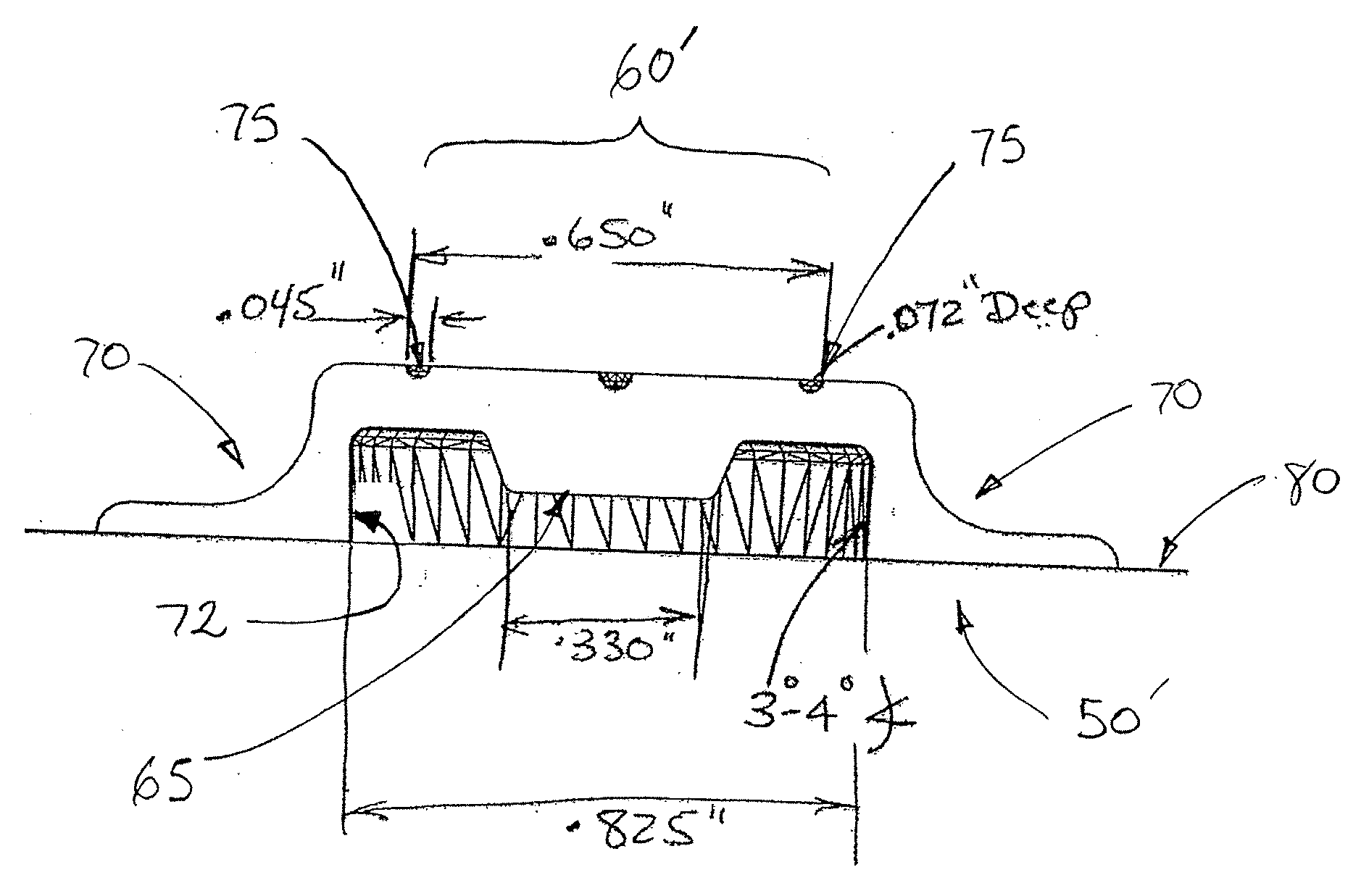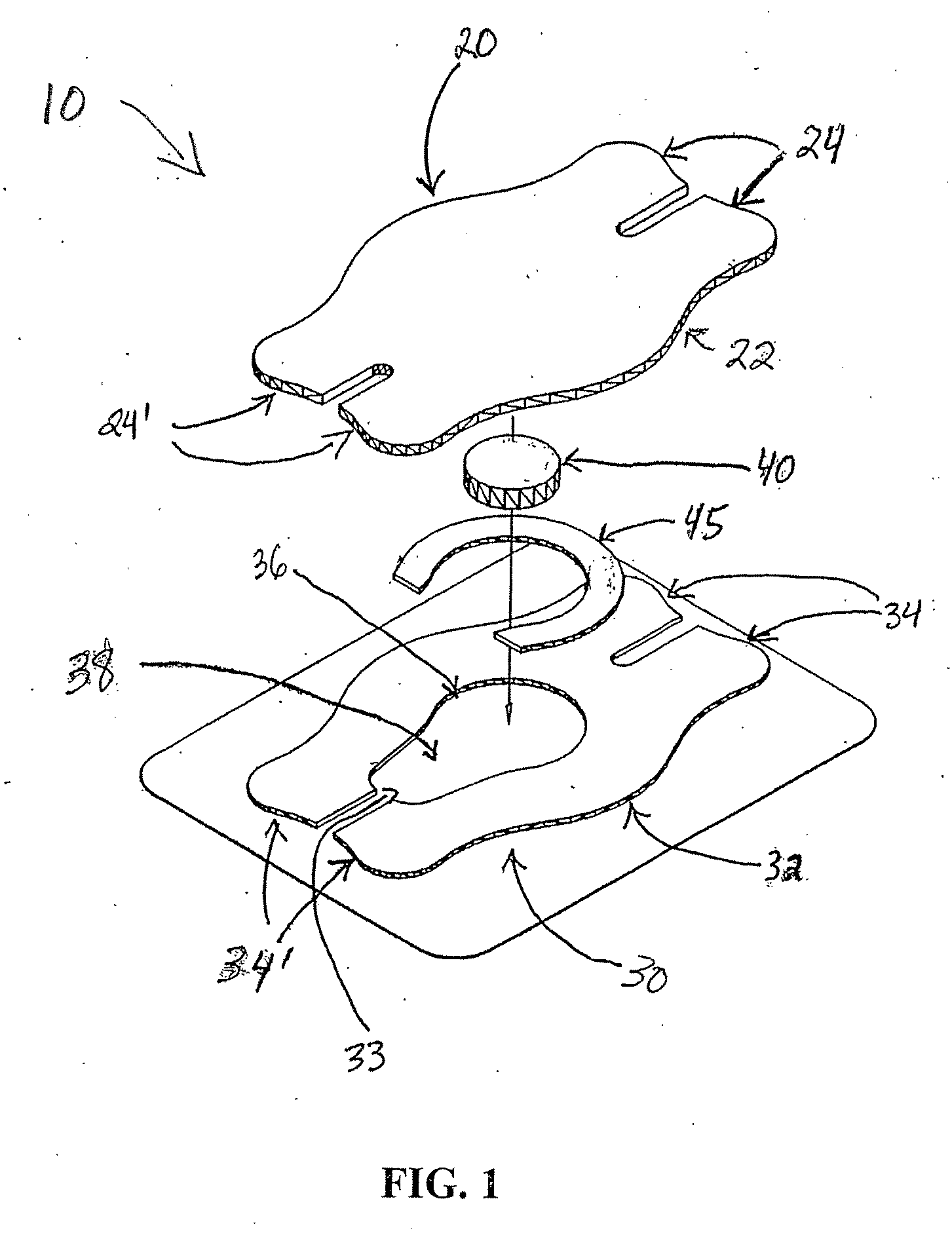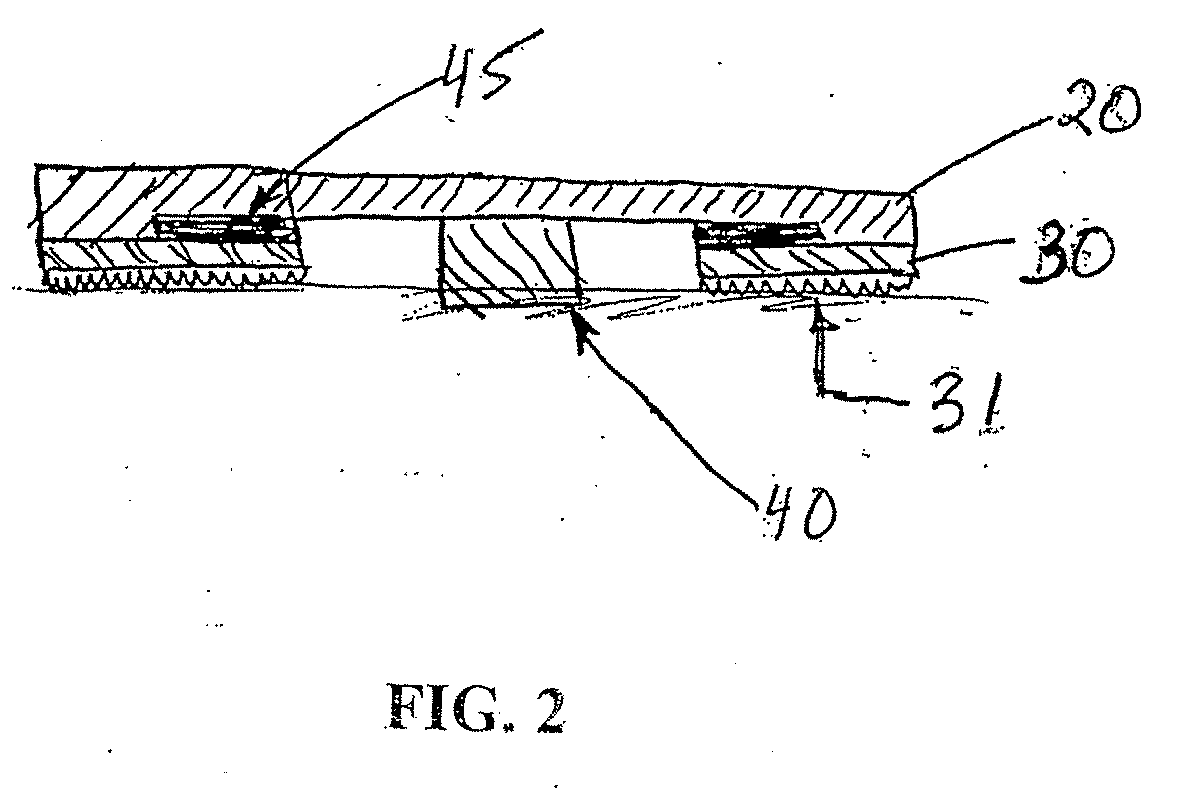Sensor holder
a sensor and pulsatile ac technology, applied in the field of non-invasive reflectance pulse oximetry, can solve the problems of less than 10 pulsatile ac signals, and more difficult to perform reflection pulse oximetry
- Summary
- Abstract
- Description
- Claims
- Application Information
AI Technical Summary
Benefits of technology
Problems solved by technology
Method used
Image
Examples
Embodiment Construction
[0015] Reflectance pulse oximetry sensors can be used to obtain arterial pulse readings from a patient when they are in contact with a surface of the patient's body (e.g., skin on the patient's forehead or another suitable part of the body). Disposable holders are typically used to hold such sensors on the patient's body. When the holders are opaque, they advantageously provide optical shielding and reduce the negative effects of ambient light on the photoplethysmographic signal.
[0016] When the pulse oximetry sensor is placed in contact with the patient's skin and pressure is applied to the sensor, the arterial pulse readings are improved considerably. Pressure on a sensor diminishes venous blood in the tissue underneath and, consequently, the disturbing influence of pulsating and non-pulsating venous blood is reduced considerably. The arterial pulse readings are most improved when the amount of pressure is high enough to block venous blood interference, but not so high as to dampe...
PUM
 Login to View More
Login to View More Abstract
Description
Claims
Application Information
 Login to View More
Login to View More - R&D
- Intellectual Property
- Life Sciences
- Materials
- Tech Scout
- Unparalleled Data Quality
- Higher Quality Content
- 60% Fewer Hallucinations
Browse by: Latest US Patents, China's latest patents, Technical Efficacy Thesaurus, Application Domain, Technology Topic, Popular Technical Reports.
© 2025 PatSnap. All rights reserved.Legal|Privacy policy|Modern Slavery Act Transparency Statement|Sitemap|About US| Contact US: help@patsnap.com



